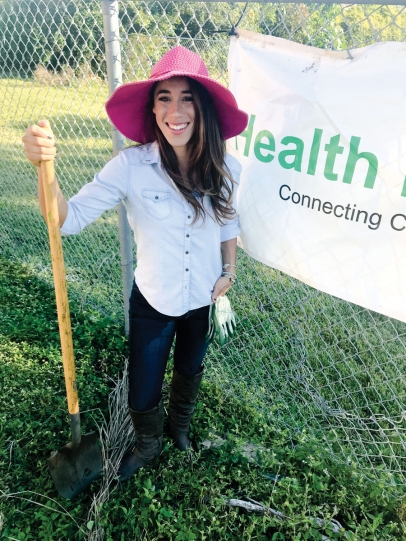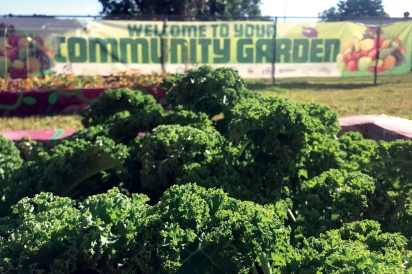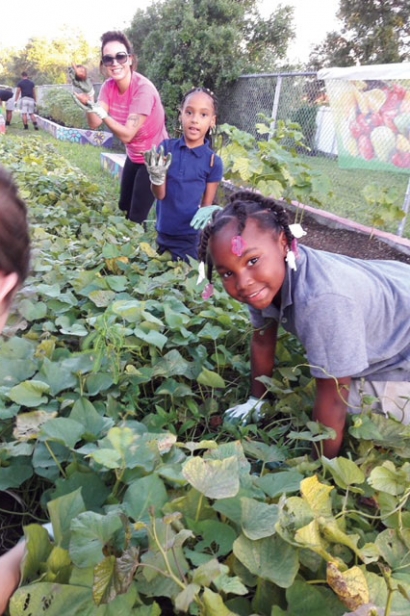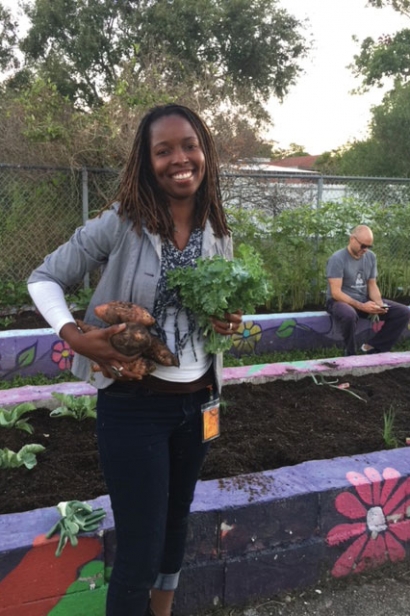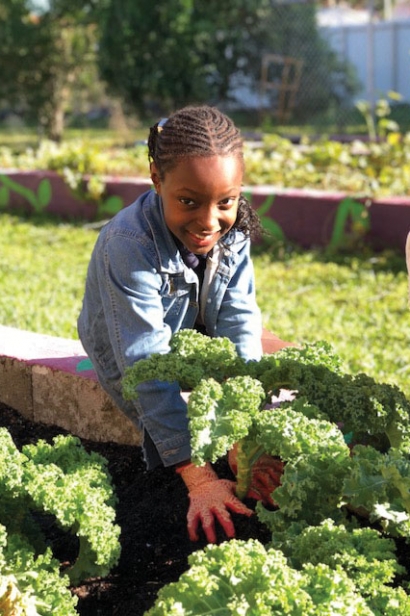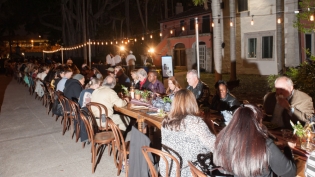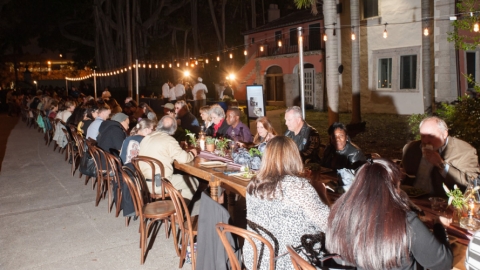Growing the Community: Health in the Hood
If you see a young woman measuring and staking vacant land in your neighborhood, passing out flyers and offering to pay you to work in a garden, it might be Asha Loring of Health in the Hood on her quest to bring fresh produce to South Florida food deserts.
Loring is founder and executive director of Health in the Hood, a nonprofit that installs community gardens in residential food deserts and offers health education programs. Loring, whose professional background is in nonprofit administration, mastered grant writing and worked in different communities before launching the South Florida organization.
Community gardens had long been a part of her upbringing. Her father, Dr. Marvin Dunn, a former professor and long-time organizer in Miami, installed community gardens as part of his organization, Roots in the City. Loring affectionately refers to Dunn as “the OG – original gardener.” Even her bat mitzvah community service project was in one of her dad’s gardens.
A fitness fanatic, Loring originally envisioned Health in the Hood as a comprehensive health education program. And although all the gardens continue to supply a package of health education programs including nutrition workshops, exercise obstacle courses and food journaling, the gardens take center stage now.
The organization is celebrating their five-year anniversary in February. Eventually, Loring hopes to make Health in the Hood a national model: adaptable, but replicable in cities across the country. They already have a satellite garden in Los Angeles, where Loring lived for a short time.
Public Help Needed
“Our struggles are really just finding enough funds to support the gardens,” she says. “There is no dearth of vacant land and partners who want gardens and schools, and kids and communities that are welcome and opening,” she says. The most helpful things the public can do are providing donations, volunteering and just keeping Health in the Hood in mind if they have vacant space.
All of the land for each garden is donated by a community partner. Each garden has a manager who lives in the neighborhood. Soil and plants are supplied by organic partners, and produce is distributed all for free to community members. Garden managers run the day-to-day upkeep of the garden, distribute the produce and get paid $12 an hour. Health in the Hood also hires crews from the neighborhood to do the heavy lifting on installations.
Growing in South Florida
Health in the Hood started with a Liberty City garden, but has since installed gardens in Overtown, Opa Locka and Hallandale Beach. In each neighborhood, Loring eases her way into the community, first talking to the people who live there and listening to what they need and want out of a garden.
Because of her emphasis on listening to the community’s needs, each garden takes on different characteristics. The Hallandale Beach garden is on an acre leased to them by the City of Hallandale Beach for one dollar a year. It is Health in the Hood’s largest garden and the only one in Broward.
“People hear Hallandale Beach and they’re like, ‘Oh, it’s the beach, it must be like a nice garden by the sea.’ It’s not the Hallandale Beach that you’re thinking,” says Loring. While other gardens have been “rough,” she says those challenges can exist in Hallandale Beach. “You know this makes it sound horrible, but we found a box of bullets in the Hallandale garden. It doesn’t discriminate.”
Like other neighborhoods, their Hallandale Beach garden is in a food desert. But because it’s is so large and productive, people from higher-income parts of Hallandale took an interest in the garden and were asking if the veggies were free for them too, Loring says.
To adapt to the different circumstances in that community, Health in the Hood implemented a unique “need veggies, got veggies,” program. People who “got veggies” are those who can pay for the vegetables and will donate to the garden if they get any of its produce. Those who “need veggies” are the people in the neighborhood who don’t have regular access to vegetables so can get the produce for free, under Health in the Hood’s traditional model.
While Health in the Hood continues to adapt and expand, the heart of the organization remains the same. It’s about a community-wide effort to provide each other with safe, accessible health resources that the neighborhood wouldn’t otherwise have.
“The story isn’t always what you think it is. One woman seemed like the neighborhood nutty lady. She’s one of my best employees now,” Loring says. “You learn a lot about people and how to abandon judgement, and how a community effort really brings out the best in a community.”
Health in the Hood
healthinthehood.org
Are you a teacher who’d like to take your class on a field trip, or hear about the program in the classroom? Do you live in a food desert that could use an edible garden? Want to volunteer? Contact their website to connect.
Health in the Hood Gardens
Liberty City
Opa-Locka
Hallandale Beach
Overtown Community Garden


